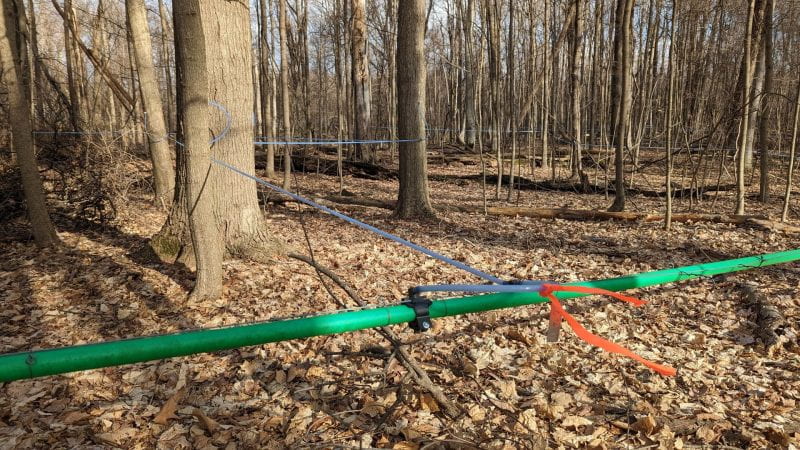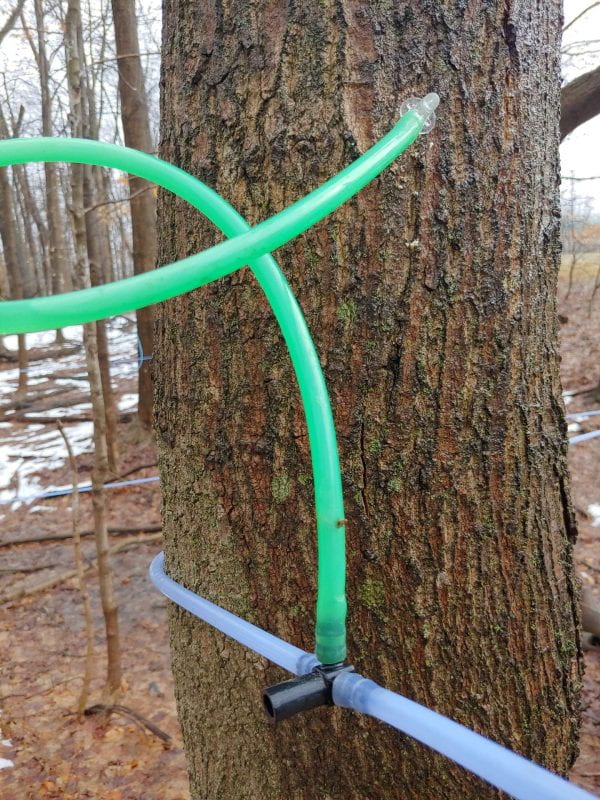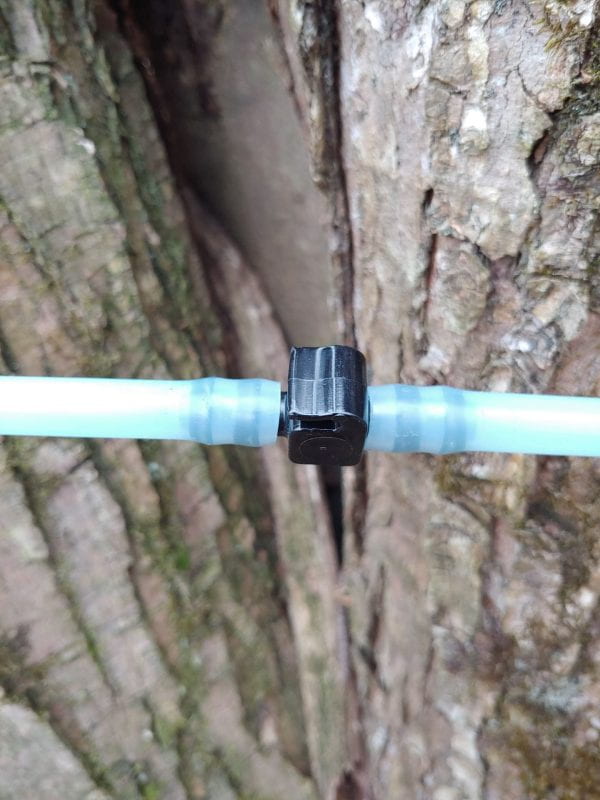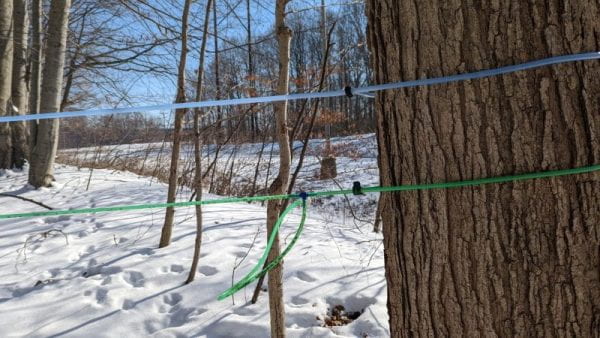Hands down, the number one question that comes up this time of year is “When should I tap?”
Due to the warmest December on record, I have heard a few Ohioans even asking “Should I have tapped in December?”. When you look back over the years, the trend has been toward earlier tapping dates, but hoping that you can keep taps open for 3+ months is a bit of a stretch. There is no way that will happen on a gravity system, and you will need more than a little luck even on high vacuum.
The scientific approach to planning involves studying climatological data and developing a plan based on that data. The maps below are long range weather predictions for the next three months. You can clearly see that all indications point to above normal temperatures for the next three months. For sugar makers what does this mean?

To quote a good friend and fellow maple researcher, “when you look at forecasts you need to look at it from the big producer / small producer perspective.” Because most small producers tap everything at one time, they need to consider the value of a good short-term, 30-day forecast. In most cases, especially if you are on a gravity system, you need to find the best 30-day window that will allow you to make the most syrup. Once you tap, you are on the clock and that clock runs out shortly after 30 days. On the other hand, if you are a large producer or even a medium producer on vacuum, you need to study yearly trends. Trends will disclose what has happened over the last 3 to 5 years. What we have seen is a trend to earlier tapping just about every year. In most cases, early tapping has paid off in Ohio. A major reason is that newer technology lends itself to pushing the envelope when it comes to tapping. You have the advantage of running a semi-closed vacuum system utilizing 24/7 operation. This lengthens your season considerably.
One of the most valuable pieces of data you can use are temperature history graphs for your location. Weather Underground has some of the best. They plot the maximum, minimum, and average temperatures. Plotting the maximum and minimum will give you a good idea on the number of freeze-thaw days to anticipate for a month. As we all know, freeze-thaw cycles are very important and drive daily sap runs. You can look at these cycles over a five or even ten year period. Over time you begin to see how various weather patterns play out.
Keeping in mind these are zip code specific but we are talking at the broad scale of an entire state, here are three February graphs. You can clearly see we started February leaving a warm end to January on two out of the three graphs. In all the graphs, conditions continued to warm up as February wore on. In two out of the three, the temps dropped going into March. This may be a hint for what could happen this year. 2020 and 2022 were almost normal. In both cases, our records show average to above average production. 2021 was the outlier and production was down for that year as temperatures stayed warm through most of March. The other two years highlight the fact that starting out February warm does not mean you will march into March warm.



Too much science? Here is a more common sense approach that prioritizes the size of your operation. If you are tapping thousands of taps, you must start early to get the job done. For a moment, think about a huge 50,000-tap operation. Should they consider tapping right after the first of the year? Definitely! One of their strategies is to tap 5,000 taps super early. This results in the Facebook posts you may have seen bragging about syrup being made over Christmas. Several big producers in the East did this in December. Does that mean they tapped everything? Most likely not. A large commercial producer hedges their season by tapping some early and the rest over the month of January with everything in the tree and ready by February 1. Small producers who are setup to boil early can also do this, the only difference is they may start tapping their early running trees shortly after New Year’s but plan to finish out in February. This keeps fresh taps in the system and prevents you from putting all your eggs in one basket. The best way to accomplish this is to keep very good records.
That brings us back to our initial question. When should I tap this year? All indications are that we are going to have a warmer than normal winter. If you are in Southern Ohio, you might be tapped already. North of I-70, you should probably hold back until the end of January. This is where analyzing the 30-day forecast is critical. Studying several long-range forecasts a little closer, I noticed that we may have some of the coldest weather of the winter on the last week of January and the first week of February. While the forecast is showing a warming trend coming off several weeks of genuine cold weather, depending on your situation you may even want to hold off until the first week of February.
Of course, the joker in the deck is the El Nino weather event we are experiencing. El Nino’s are known for extremes and all it takes is a bend in the jet stream and you could be looking at 10 more days of below average weather. Once this happens, you usually go right back to the warmer than normal pattern. In this case, cold weather is your friend. What we do not want is 10 days straight above normal!
As for my prediction! I will tell you what kind of season we had in 2024 on the first week in April. May your sugar season be long and sweet.


























